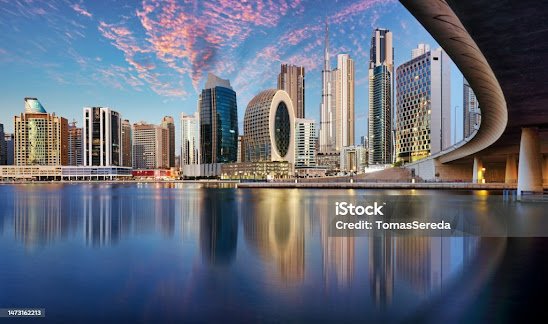William Wordsworth
SAB 121: The US Senate repeals the SEC's crypto regulation, but Biden threatens to veto it
SAB 121: The US Senate repeals the SEC’s crypto regulation, but Biden threatens to veto it
Joe Biden disputes the claims made by lawmakers, prominent figures in the cryptocurrency space, and banking executives that an SEC policy on crypto custody and accounting hurts American investors and stifles innovation.
Contents Table of
- SAB 121: What is it?
- The founder of a consulting firm blames SAB 121 for the FTX
- Debacle, calling the SEC’s response “insane.”
SAB 121: What is it?
Despite the US Senate’s vote on May 16 to repeal the SEC recommendations, opponents of SAB 121 are still very much in the game.
The President must still sign off on the Senate decision. But President Joe Biden has stated that he is willing to veto the resolution to completely repeal SAB 121. An assertion made by the White
SEC encounters resistance
According to Nickel, eliminating SAB 121 would improve investor protection and guarantee American competitiveness internationally. Banks that have a proven track record of delivering fiat custody services could expand to include cryptocurrency. Some have claimed that SAB 121 was ineffectual since cryptocurrency initiatives like Voyager and Celsius failed to safeguard their clients’ assets even after it was put into action.
Because of SAB 121, which Nickel described as a “prohibitively expensive regulatory burden,” American consumers are forced to rely on “riskier offshore custody solutions.”
Nickel continued by calling the SEC’s approach to digital assets “misguided” and bringing out issues with the way SAB 121 was being implemented. He said that the way staff accounting bulletins were used constituted a “breach of the rulemaking process,” despite the fact that they are typically intended to serve as guides on best practices.
“Insanity”: The founder of a consulting firm attributes the FTX Debacle to SAB 121
Yeats, William Butler: "Easter, 1916"
Yeats, William Butler: "Easter, 1916"
Coming with vivid faces
From counter or desk among grey
Eighteenth-century houses.
I have passed with a nod of the head
Or polite meaningless words,
Or have lingered awhile and said
Polite meaningless words,
And thought before I had done
Of a mocking tale or a gibe
To please a companion
Around the fire at the club,
Being certain that they and I
But lived where motley is worn: …
Through summer and winter seem
Enchanted to a stone
To trouble the living stream.
The horse that comes from the road,
The rider, the birds that range
From cloud to tumbling cloud,
Minute by minute they change;
A shadow of cloud on the stream
Changes minute by minute;
A horse-hoof slides on the brim,
And a horse plashes within it;
The long-legged moor-hens dive,
And hens to moor-cocks call;
Minute by minute they live:
The stone's in the midst of all.
…
Was it needless death after all?
…
And what if excess of love
Bewildered them till they died?
As a mother names her child
…
I write it out in a verse—
MacDonagh and MacBride
And Connolly and Pearse
One day, at a meeting of members, an elderly Irish member of Parliament made what may have been his last appearance. He sang an impassioned rendition of a ballad he had written in the style of Young Ireland, lamenting that new poets and groups had appropriated something of their holiness while repeatedly reciting his hallowed names, Wolfe Tone, Emmet, and Owen Roe. Although the ballad lacked literary value, I returned home with a troubled conscience. This concern persisted for maybe a dozen years until I realized that our efforts had deepened my understanding of all the factors that reinforce racial inequality. I remembered that former lawmaker as
To murmur name upon name
As a mother names her child.
The AI plan for Dubai may serve as a "roadmap for wider region."
The AI plan for Dubai may serve as a “roadmap for wider region.”
MAY 16, 2024
Dubai recently revealed its Artificial Intelligence (AI) strategy, an annual project that aims to use AI’s potential to improve people’s quality of life worldwide.
The founder of a Pakistani AI company calls Dubai’s initiatives to support tech companies “exhilarating.”
Semih Kumluk, Head of AI and Digital at PwC, recently spoke with Business Recorder about Dubai’s recently unveiled Artificial Intelligence roadmap, which aims to maximize its potential to improve the city’s quality of life.
According to Kumluk, the blueprint will boost usage and encourage the implementation of AI in both the public and private sectors.
A new generation of AI specialists will be developed during AI Week in schools and universities, and specialized businesses and individuals will be drawn to Dubai by the commercial license for AI.
He predicted that data centers will be crucial to Dubai’s digital transformation effort, particularly in light of the personal data protection law’s need that data be kept physically in the United Arab Emirates.
The city’s landscape will change as a result of AI applications in a number of industries, including education, healthcare, and transportation (self-driving taxis). But there are issues that need to be resolved, such as valuation services and due diligence for startup investors.
“Due diligence is essential to overcoming any potential startup challenges.”
Five Nutritious Foods with an Unexpectedly High Sugar Content
Five Nutritious Foods with an Unexpectedly High Sugar Content
Food labels that make claims like “gluten-free,” “keto-friendly,” or “natural” may deceive consumers into believing that a product is healthier than it actually is. These statements may not always imply that a food is healthful, even when they might point to a decreased carbohydrate content or the lack of wheat.
HEALTHY FOODS
First, canned soup
2. Bars of Granola
Granola bars, which are frequently eaten as a quick lunch or snack, can also have surprisingly high added sugar content. For example, Nature Valley Oats and Honey Granola Bars include modest levels of protein and fiber and eleven grams of added sugar. Choose bars that have
Instant oatmeal that has been flavored can be highly sugar-laden, even though oatmeal is normally a healthful choice. For instance, the Cinnamon & Spiced Oatmeal from Quaker Oats has 10 grams of added sugar. Because it has 35% less added sugar than regular tastes, Quaker’s lower-sugar instant oatmeal is a good option.
A popular option for a simple and quick breakfast or as a side dish for yogurt is cereal. Even cereals that advertise themselves as healthy options frequently have hidden sugars. One seemingly healthy whole-grain product from Raisin Bran, for example, has up to nine grams of added sugar per serving; eating more than one cup of this product can add a substantial amount of added sugar to your daily intake. With several little or nonexistent additional
The Orange Crow: Ready to extend its colorful wing span
The Orange Crow: Ready to extend its colorful wing span
Unheard Cawing: The Orange Crow's Journey towards Equality and Knowledge

We go on a voyage of discovery as the pages of this graphic novel unfold, one in which color tells tales that cannot be uttered and silence speaks volumes. With its fiery feathers, the Orange Crow serves as a metaphor for silent power, showing us that strength doesn't always roar but can sometimes occasionally whisper through the spaces in our souls.
One name stands out in the annals of literary history—a name that shatter stereotypes and conventions: KashafAlvi. Kashaf, who is only 20 years old, is a living example of the human spirit's triumph, tenacity, and inspiration.
When asked about his feelings regarding his accomplishments, Kashaf Alvi responded in sign language, "My achievements are not just my own, but the collective heartbeat of all who have believed in me," with an ever-present, calm grin. "Wings are not just for flying; they are also for carrying the dreams of those who believe," the speaker continued.
A Complete Guide to Creating a Well-Balanced Meal for People with Type 2 Diabetes
A Complete Guide to Creating a Well-Balanced Meal for People with Type 2 Diabetes
- Set aside a quarter of your plate for items high in protein, a quarter more for carbohydrates with a low to moderate GI, and the other half of your plate for a variety of salads and vegetables. This helps with portion management and guarantees a balance of nutrients. Reducing the size of the plate can also help significantly reduce the portion size.
2. The Focus Is on Vegetables
Make an effort to include two or three portions of non-starchy vegetables in your meal. Half a cup of cooked vegetables or an entire cup of salad is represented by a single serving. Grated vegetables can add flavor to soups, sauces, and oven-baked dishes; alternatively, they might take center stage instead of playing supporting roles.
Two cups* of mixed salad mixed with bell peppers, tomatoes, lettuce, spinach, etc.
*You are welcome to serve more than these suggested serving sizes.
For every individual:
- Two little (45g) chicken eggs
- ½ cup of cooked legumes, such as chickpeas or lentils, or a blend of three beans
- 120 grams of tofu
- 100g of skinless cooked chicken (125g raw)
- 100g of lean meats (125g raw) such as lamb, hog, or beef
- 120g of cooked fish (170g raw), such as canned tuna, salmon, or mackerel
- 40g of low-fat cheese, or roughly two pieces
4. Add Controlled Portions of High-Quality Carbohydrates
Eat less starchy vegetables in your meal to lower its glycaemic load.
To keep the overall GI of your meal low, choose foods high in fiber yet low to moderate in GI. Choose quinoa, barley, pasta, noodles, grainy breads, and basmati rice. Interestingly, legumes have low GI carbohydrates and are also a source of protein.
For every individual:
- A quarter cup of cooked brown or basmati rice
- One cup of cooked noodles or pasta, ideally wholemeal
- Two slices of wholegrain bread or one tiny wholegrain bread roll
- One cooked medium-sized kumara or tiny potato
- One medium-sized corn cob
- ½ cup of cooked couscous or quinoa
For every individual:
- two tsp pesto or chopped or crushed nuts
- One teaspoon of extra virgin olive oil or another plant-based oil
- two tspn of salad dressing or avocado
- A single tablespoon of hummu
Untitled Post
Try the Thanksgiving Cheese Board at Vermont Creamery, which includes sliced turkey, cranberry sauce, and Brussels sprouts—all traditional Thanksgiving fare. Their Goat Cheese Log with Cranberries, Oranges, and Cinnamon goes great with other cheeseboard ingredients like candied pecans, apple butter, and sweet potatoes.
- Thanksgiving Turkey Cheese Board: Using a red pear, rolled-up meats, cheese, and fruits, create a charming turkey-shaped charcuterie spread.
- Holiday Charcuterie Board: Make your own by following the recipe from Half-Baked Harvest. It calls for crackers, meats, nuts, fruits, and vegetables in addition to a range of cheeses like blue, goat, and brie.
- What’s on the Thanksgiving Cheese Board? For Thanksgiving, Gabby Cooking creates a charcuterie board with a “darker” color palette. It comes with a variety of meats, olives, marinated artichokes, persimmons, crackers, and delicious toppings like honeycomb on brie cheese.
- Winter Bruschetta Bar: What’s Gabby Cooking’s Winter Bruschetta Bar elevates classic bruschetta with cheeses including goat cheese, blue cheese, and crème brie, as well as a range of toppings like prosciutto, pomegranate, and red peppers.
- Turkey Snack Board: Unlike charcuterie boards that are mostly composed of meat, the Bakermama’s Turkey Snack Board is lighter and emphasizes fruits, vegetables, and nuts.
- Keto Charcuterie Platter: This platter is ideal if you or your guests are on a low-carb or ketogenic diet. It has mouthwatering meats, cheeses, and nuts, and cheese whisps are used in place of crackers.
- Trader Joe’s Charcuterie Board: You can make this simple and inexpensive charcuterie board from The Bakermama with materials that you can buy at Trader Joe’s, which makes it both convenient and economical.
- Plant-Based Charcuterie Board: Ambitious Kitchen provides a delectable plant-based charcuterie board with a range of vegan cheeses, vegetables, fruits, nuts, olives, chickpeas, and dark chocolate for vegan visitors.
- Mezze Platter for Vegetarians: Astonish your guests with this app from What’s Gabby Cooking, which features feta, olives, tomato pesto, artichokes, hummus, tzatziki, and pita chips with a Mediterranean flair.
- Vegan Charcuterie Board: For a complete holiday experience for your vegan visitors, Minimalist Baker offers a vegan charcuterie board complete with a vegan pimento cheese ball, vegan pepperoni, garlic and herb vegan cheese, hummus, almonds, and chickpeas.Have fun assembling a gorgeous charcuterie platter that will wow your Thanksgiving visitors!
BTC/USD: As we wait for the next leg up above $63,000, Bitcoin sways around its 100-day moving average.
BTC/USD: As we wait for the next leg up above $63,000, Bitcoin sways around its 100-day moving average.
KEY POINTS:
- Bitcoin aims to reach the $63,000 mark.
- We’ll have inflation figures on Wednesday.
- Bitcoin is down 17% from its peak.
- The week began with Bitcoin (BTCUSD) rising sharply following a weekend of gains. For the previous few days, prices have been gradually rising and are already approaching $63,000. As markets generally got ready for major events over the following few days, investors continued to extend their long bets on the OG token early on Monday morning. A significant report may cause a stir and spark a new upswing in the cryptocurrency market.
- The United States’ April inflation figures are expected to be released on Wednesday. Enthusiasts of digital assets will be keeping an eye out to see whether consumer prices have dropped, as this would indicate a strong economy and encourage more daring wagers on riskier assets like Bitcoin and companies. However, another strong inflation report might raise concerns about an oversupply of money and cause a significant decline in the value of cryptocurrencies.
- Bitcoin is currently trading at about $62,000, or roughly 17% less than its top of roughly $74,000 per coin, which it reached in mid-March. Bitcoin has increased its valuation by more than 40% this year, or over $500 billion in market capitalization to a total worth of $1.2 trillion, despite the little decline (by crypto standards). From its record high valuation of $3 trillion, the whole digital asset industry has lost roughly 23%, hovering around $2.3 trillion.
Mother's Day Marketing Ideas: 8 Mo8Mother's Day Marketing Ideas: 8 Creative Ideas
Bring on the freebies.
Emphasize to clients the value that they and their mothers bring to your company. Providing complimentary services, like roses during breakfast or a complimentary cappuccino, might attract patrons to your café or restaurant. These kinds of services can be advantageous for salons as well. Offering free champagne or mocktails to clients getting hair and nails done might add even more attraction to your establishment.In addition to wanting to get their mother something very meaningful, people are also on the lookout for deals. If you own a spa or salon, think about giving clients who reserve services as a gift for their mothers a discount. Consider giving Mother's Day bouquets 25% off if you're a florist.
Customers may visit your business and spend more money as a result of promotions. Make sure you set promotions strategically and highlight the savings to clients, since this can improve perceived value and give them the impression that they're receiving more for their money.
61% of consumers favor unexpected gifts and incentives as a method of client connection, according to research. In light of this, be sure to promote these kinds of services in your email and SMS marketing to entice clients to your establishment.
Make a promotion offer.
In addition to wanting to get their mother something very meaningful, people are also on the lookout for deals. If you own a spa or salon, think about giving clients who reserve services as a gift for their mothers a discount. Consider giving Mother's Day bouquets 25% off if you're a florist.Customers may visit your business and spend more money as a result of promotions. Make sure you set promotions strategically and highlight the savings to clients, since this can improve perceived value and give them the impression that they're receiving more for their money.
Present the newest products.
Introduce new products to your clients and their mothers. According to the 2024 Square Future of Multihyphenate Businesses report, forty percent of consumers would be highly open to trying a new product from a company that is more recognized for something else. Novel products and services like apparel, workshops, and do-it-yourself kits are well-liked choices among clients and can have a significant impact.Let's say a customer's mother refers to your company as a neighborhood favorite, but you have a full weekend schedule. You may make sure they stay involved with your firm by providing a do-it-yourself kit.
DIY meal kits and beauty kits are just two examples of the various revenue sources that businesses across all industries may leverage to grow and prioritize their clientele.
Organize a free giveaway or contest.
Marketing platforms should be used wisely to help you effectively promote your Mother's Day giveaway. Make sure to inform clients via all of your channels—including social media, email, and SMS marketing, as well as your website.
Organize a gathering.
Mother's Day is today. Consequently, the major event will always be wherever a mother is present. However, go above and beyond to establish your company there. This might appear to salons as a unique makeover occasion. This might be a chef-curated eating experience for eateries. To assist mothers in trying on and selecting the ideal ensemble, other establishments, including clothes stores, may arrange a dress-to-impress event. It is possible to stand out from the competition in any field and attract both new and repeat business.
According to 20% of consumers surveyed for the 2024 Square Future of Customers report, taking part in retail activities will motivate them to visit stores. Getting people into the store can increase sales.
Return the favor.
Although being a mother can be a wonderful adventure, there might be women in your neighborhood who are having difficulties. One of the best ways to demonstrate your dedication to your community and ideals is to donate time and resources to organizations that support them. Customers' reactions to your business may be directly impacted by your choice to donate a portion of your profits or collaborate with charity on an event. YouGov reports that 45% of consumers are more likely to make a purchase from a company that donates a portion of its profits to charity. Make the best decision for your company and the nonprofit or nonprofits you wish to support by doing your homework. Share your plan with them as soon as you've decided on one so they can comprehend.
Make the perfect guide to gifts.
Gift guides are a unique opportunity to highlight everything your company has created with moms in mind. Gift recommendations may steer shoppers to certain products and expedite the purchasing experience for those who might be pressed for time. They might feature everything from specialized candles to matching jewelry sets.
Make sure you know who your target audience is in order to get the most out of your gift guides. A gift recommendation for first-time mothers, for example, would appear different than one for more experienced mothers. If your company sells gifts that would be useful to various kinds of mothers, be sure to divide up the gifts so that customers can find them more easily. To make things even easier to find, think about sorting the items based on price.
If your gift guide is successful
Remember to bring the gift card.
The gift card works when everything else doesn't. The National Retail Federation reports that since 2015, Mother's Day spending has climbed steadily. An estimated $35.7 billion was spent last year alone, with 54% of consumers indicating that they would purchase gift cards. By promoting your digital and in-store gift cards on Mother's Day, you can make your company stand out from the competition and attract more customers. You can use Square Gift Cards' distinctive designs to customize your gift cards to match your business. As the big day approaches, think about stepping up your gift card marketing to better connect with last-minute buyers.
A global team of partners is bringing you The Bottom Line because they think everyone should be able to engage in and benefit from the economy.
Whatever method you choose for Mother's Day promotion, bear in mind






